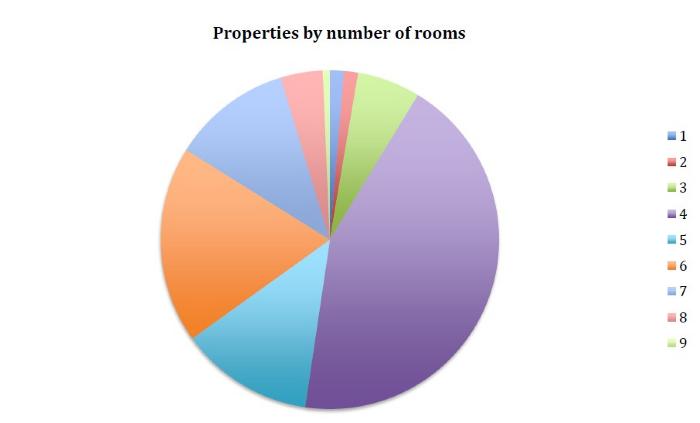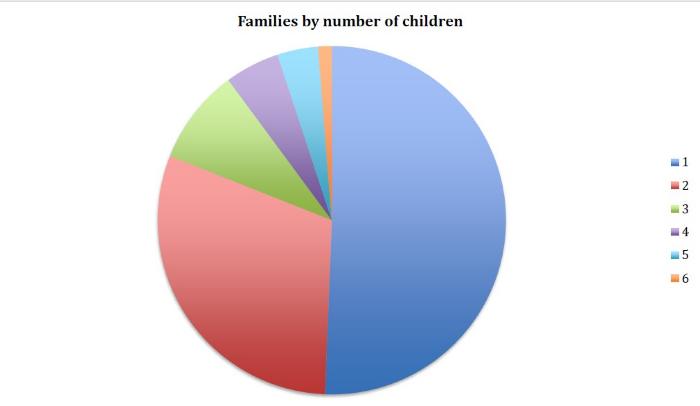A snapshot of Willifield Way from the 1911 Census
Between the start of building work in Hampstead Garden Suburb in 1907 and the date of the 1911 Census a large number of the houses planned in the Old Suburb had already been erected. Willifield Way was part of this initial phase of building work. The Census was taken on the night of April 2nd/3rd 1911, by which time 160 of the eventual 167 houses in the road had already been built, although 5 were still unfinished buildings. Thus there were 7 plots still to be developed. Four of the houses had been subdivided, three of which had two census returns submitted. Ten of the properties were unoccupied on census night, as presumably their tenants were away from home. So there were 149 returns filed for the road.
The numbering system begins at the junction with Hampstead Way, with the odds on the west or south side and evens on the east or north. Not all numerals exist, for instance there is no number 1 or 3 or 5. The six houses on Willifield Green were not originally part of the numbering system of the rest of the road, and were then numbered 1 - 6 Willifield Green. Today these houses have been incorporated as the odd numbers 113 – 123.
The houses/properties came in a variety of sizes and had between 1 and 9 rooms. For census purposes halls, landings or bathrooms are not considered as rooms, but kitchens, studies, as well as living rooms and bedrooms, are. The largest houses were around Willifield Green. 129 houses had between 4 and 7 rooms, and the average number of rooms was 4.9.
There were 527 people living in the road on census night: 256 males and 271 females. 53%, or 79, of the households were families with children under 16, and there were 146 children under 16 living in the street, that is 27.7% of the residents. 40 families had only one child aged under 16, 24 had two, 7 had three, and there was one family with 6 children. The average number of children per family was 1.85. There were of course some families with children aged 16 and over still living at home with them. These older children were mostly part of the workforce.
17 of the heads of household were women, 3 of whom were married, 7 were widowed, and 7 were single ladies. 132 heads of household were men, 124 of whom were married, 3 were widowed, and 5 were single. Five of the married households only had one partner at home that night. The average length of a marriage was 10.1 years.
Households contained a variety of family members other than sons and daughters and there were 14 visitors staying in the road on census night. There were 21 boarders, or paying guests. There were 27 live-in staff, mostly servants, but also housekeepers, family helps, companions, nurses and cooks. One house had only the housekeeper in residence on census night, but her employer had completed the return, not her.
19 of the 527 residents had been born abroad, including 13 in Europe. 16 hailed from Scotland, 7 apiece from Wales & Ireland, with 2 from each of Jersey and the Isle of Man. But by far the majority, 331 or 63%, had been born in London, with another 43 or 8%, in the Home Counties. 96 or 17.7% came from elsewhere in England and the birthplace of four was not given. Of the heads of household, 97 or 65% had been born in London or the Home Counties.
The average age of the heads of household was 40.4 years, with the 28.2 being the average age overall for the street. Only 11 inhabitants of the street claimed to be retired, and only 16 were over 65. There was one lady who was 80, and she was the oldest inhabitant.
238 or 42.5% of the residents had occupations and this included the live-in staff who formed 11.8% of the employees. By far the most common career was that of a clerk; there were 52 people (21.8%) living in Willifield Way with that occupation, many working in the Civil service, but in many other industries too. There were also a lot of printers, 16 (6.7%), who worked either as compositors, linotype operators, or lithographic draftsmen. The post office employed 10 (4.2%), as sorters or postmen. There were 10 teachers, 7 upholsterers, 7 commercial travellers, 3 architects, a doctor, a priest, 6 in tailoring, 2 hairdressers, and 3 gardeners. Nine people said they were of Private Means. In only one couple was there a working wife. She was a teacher.
Number 138 was the HGS Social Club House where the Club Steward, Charles William Henshaw, aged 39, from Alderley Edge, Cheshire, lived with his wife and 12 year-old son. After the building was bombed in WW2 the site was divided into the three properties which exist today: a modern house at 138, Fellowship House at 136A and Mercury Tennis Club at 138A.
The return for number 180 had been defaced and gave scant information. A (presumably) suffragette/suffragist, a wife with the surname Stockman, had written on the Census form: “ I refuse all information to a Government which governs without my consent”. The Registrar, Alf E Taylor, amended the return and added: “Particulars inserted from information obtained by intermediaries of Registrar General”.
Several people involved with the development of Hampstead Garden Suburb lived in Willifield Way at the time: at 28 - the HGS Trust Public Company Secretary, George William Rousham; at 37 – the HGS Trust Public garden foreman, Leonard Smith; at 51 – an Architect and Surveyor of a Housing Company (the Suburb one?), Martin Thomas Ernest Jackson; at 57 – a Clerk in Materials in Co-Partnership Housing (Suburb?); at 89 - an Estate (Suburb ?) Office Clerk, Eric Walter Ryall, who was a son of the head of the household.
Thus the demographics of Willifield Way in 1911 were rather different from those of today. A striking difference is that most of the houses would then have been leased rather than owned. As part of a brand new suburb of London it is not surprising that it was younger people who moved into road.